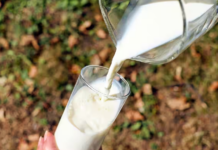New Delhi, january 03, 2024 : According to Fact.MR, a leading provider of market research and competitive intelligence, the global market for cream and soft cheese is projected to experience a Compound Annual Growth Rate (CAGR) of 5.6%, reaching a value of US $11.31 billion by the conclusion of 2033.
Cream cheese, a smooth and spreadable variety crafted from cream and milk, is widely utilized in diverse culinary applications. Recognized for its mild flavor and adaptability, it proves suitable for both sweet and savory dishes. Relative to certain other cheeses, it boasts a lower fat content.
Soft cheeses, exemplified by Brie or Camembert, exhibit elevated moisture levels and a creamy consistency. Renowned for their mild and delicate taste, these cheeses complement fruits and bread exceptionally well. Their abbreviated aging process contributes to a swifter production timeline. Soft cheeses originate from various milk sources, such as cow, goat, or sheep, offering a range of taste preferences.
The surge in the cream and soft cheese market is predominantly steered by shifting consumer preferences, marked by an escalating demand for versatile and convenient dairy products. The rise of plant-based cheese alternatives poses a challenge for traditional cream and soft cheese manufacturers, as consumers increasingly opt for plant-based options due to health, ethical, and environmental considerations.
Fluctuations in the price and availability of milk, a pivotal ingredient in cream and soft cheese production, can occur due to weather conditions and market dynamics. Adverse weather events like droughts or floods may impact the quantity of milk produced, thereby influencing the market dynamics.
Key Takeaways:
· The United States is expected to be a profitable market for cream and cheese producers due to the popular on-the-go snacking culture and high demand for convenient packaging.
· The cream and cheese market in Japan is expected to grow at a faster pace due to the inclination towards culinary fusion and the health-conscious aging population.
· In Germany, demand for cream and soft cheese is evolving due to the extensive use of organic cream and soft cheese in traditional cuisines.
The increasing demand for convenient and versatile dairy products, a growing emphasis on artisanal and natural food options, and rising consumer awareness of health and wellness trends are a few factors that are driving the market growth – Says FACTMR Expert
Key Companies Profiled in This Report
· Milk Producers Inc.
· Arla Foods amba
· Almarai – Joint Stock Company
· Groupe Lactalis S.A
· Fonterra Co-operative Group Limited
· Savencia SA
· Sargento Foods Inc.
· Mondelez International Inc.
· The Kraft Heinz Company
· Blaser’s United States, Inc.
· Franklin Foods
· Alouette Cheese United States LLC
· California Dairies, Inc.
· Boar’s Head Provisions Co., Inc.
Market Competition
Key players in this highly competitive environment are achieving higher profits through a blend of tactics centered on innovating products, establishing strong brands, and expanding their presence in different regions. Notable market leaders encompass Milk Producers Inc., Arla Foods amba, Almarai – Joint Stock Company, Groupe Lactalis S.A., and Fonterra Co-operative Group Limited.
· In January of 2023, Remilk revealed a strategic partnership with General Mills to manufacture Bold Cultr Cream Cheese. This includes Remilk’s animal-free protein.
Winning strategies
· To thrive in the cream and soft cheese market, major players should focus on creating unique, handcrafted varieties with special flavors. This will appeal to discerning consumers who seek premium, one-of-a-kind options.
· A smart move for cream and soft cheese market leaders is to introduce special, seasonal, or limited-edition varieties. It encourages repeat purchases because people want to enjoy these unique cheeses while they’re available.
· To stand out in the market, top companies should team up with well-known chefs and restaurants. By having their cheeses featured in special dishes, they not only gain visibility among diners but also boost their credibility in the culinary community.
Country-wise Analysis
Sales of cream and soft cheese are fueled by a variety of elements that are specific to each nation. Although culinary experimentation and health consciousness are common themes, market dynamics in the US, Germany, and Japan are influenced by their own food cultures, traditions, and customer preferences.
Why are cream and cheese producers able to make money in the United States?
Popular Culture of On-the-Go Snacking and the Need for Easy Packing
The spirit of experimentation and exploration permeates the American culinary scene. Cream and soft cheeses are adaptable components that go well in a variety of meals, from traditional American fare to global cuisine. As consumers and chefs use cream and soft cheeses into creative recipes and creations, this diversity in cuisine is fueling demand for these products.
Snacking is a significant part of American society due to busy lifestyles. Cream and soft cheeses are highly sought-after because they may be used as spreads, dips, or toppings for quick, on-the-go snacks. This is especially true of practical packaging styles. This tendency fits with the requirement for portability and convenience in contemporary American living.
Corporate Comm India (CCI Newswire)


































